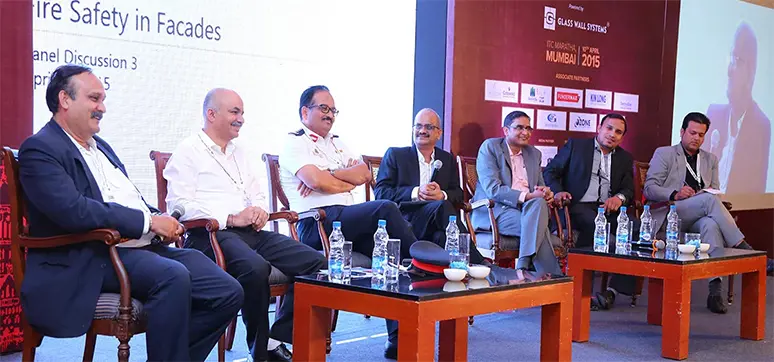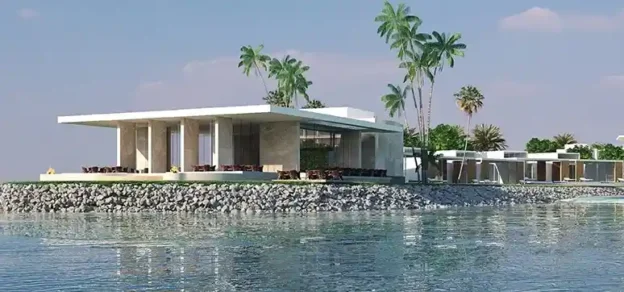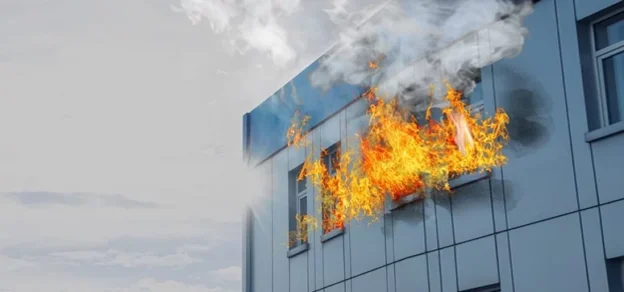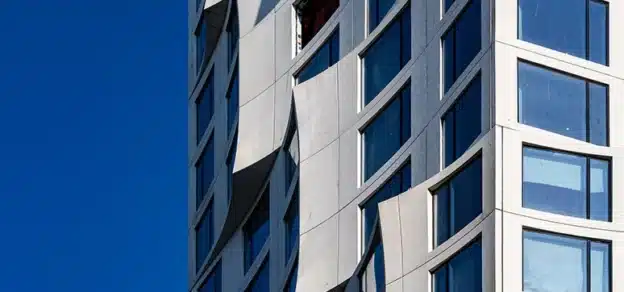The panel discussion on the New Mumbai Fire Brigade Regulations on Glass Façades focused on the following aspects: Architectural considerations while designing fire safe façades; Perimeter protection – preventing the spread of smoke from floor to floor; and Cladding – the problematic zone. The panel comprised of Atul Bhandari, Director – Design & Projects, RSP India; Praveen Chaubey, Project Manager, Priedemann; Mukesh Jaitley, Director – Projects, The Wadhwa Group; Shrikrishna Ginde, VP – Operations, Belgium Aluminium & Glass; Sunil H Nesarikar, Chief Fire Officer, Mumbai Fire Brigade; SS Warick, Chief Fire Officer & Fire Advisor, MIDC; and Shashikant Jadhav, Chairman, PEATA Committee – Fire Safety Practices with KR Suresh, Regional Director, Axis Façades as the moderator. The panel discussed the new Mumbai Fire Brigade regulation on glass façades. Here is the excerpt from the discussion:
During fire, at times building façade becomes a major barrier to evacuate people. Façade consultants, in close association with architects, work towards safety of buildings through learning the latest technology and materials. Atul Bhandari, Director – Design & Projects, RSP India said that safety is of at most priority in any building. “We need to comply all the safety regulations and sometimes have to go beyond the norms and give a design brief with fire safety as a special topic which is an inevitable part of safety measures for any building,” said Bhandari.
Shashikant Jadhav, Chairman, PEATA Committee – Fire Safety Practices pointed out that prior 2012 there was no regulations specified for fire safety. In August 2013 a draft was made, but no progress is made on the same till date, although few amendments and changes are suggested. It still remains a draft. He added that already existing buildings too have to follow certain fire safety codes.
SS Warick, Chief Fire Officer & Fire Advisor, MIDC also opined that the draft prepared by the Municipal Corporation of Greater Mumbai (MCGM) is still in draft format and is restricted to the city of Mumbai. But the need of the hour is a body like National Building Code taking up this issue, so that it becomes a national code for Pan India level to put these standards in place.
The National building code is under revision and some portion of it should provide standards for glass façade too while making the new building code. This will help building safer buildings. The national building code part -4 does not address fire standards; neither has it specified any standard for glass facades,
In Mumbai, buildings of almost 400 m tall are being planned. The fire, if occurs, should be restricted within the building. There is a need for creation of compartments preventing the spread of fire. In facades, there are mainly three factors to be considered – Stability, integrity & Penetration. To prevent damages to the adjacent compartment, efficient steps need to be followed. The guidelines for all these need to be incorporated in the building code.
Sunil H Nesarikar, Chief Fire Officer, Mumbai Fire Brigade, who has done many commendable safety operations in Mumbai, spoke about the Active and Passive measures for fire safety. The active measures include installation of fire sprinklers, fire detection systems and fire alarms. The passive measures include proper openings, passages, and compartments for fire and smoke escape. Nesarikar added that the guidelines for fire-safety are designed with users in mind. MCHI developed the guidelines after consulting glass manufacturers, users, fabricators, consultants, architects etc. These guidelines are decided after many discussions with experts as their consent is very important. “We are open for changes. Basic requirement is to provide enough time for occupant to survive for a period till the emergency service reaches the spot for rescue. Hence providing escape routes for occupants to reach safer places are essential. The glass or the façade should not prevent the movement of the occupant to reach safer place. The guideline should be a need-based one with flexibility.
Praveen Chaubey, Project Manager, Priedemann said that certain bi-laws or specifications should be flexible rather than keeping it too rigid, like the specification for windows of 1.5mX1.5msize openable windows at side-angles. An architect may not prefer to have these windows as it may not suit his design. If the designer is able to explain and convince that the occupants can be evacuated without having this kind of window, probable through any other methods like break panels which could be more practical. Guidelines should not be very stringent, but should be flexible and allow discussing; otherwise approval would be a tedious process. A large balcony or a break panel could be a substitute for windows of specific size mentioned, though it may not support the specific guidelines.
Nesarikar said that the opening sizes are specified for the smoke to escape. “But in the case of building restoration or renovation projects, we are not very stringent. The conditions are: a. 2.5 per cent opening in a building is another specification; b. glass façade should not be towards refused areas; and c. seal the gap between glass façade and building line.
Double skin facades are the in-thing in design. In this case if the gap between the two glass walls is more than 300 mm, then it would get counted in FSI. This done because, if the gap is more than 300 mm, people will occupy those spaces.
Shrikrishna Ginde, VP – Operations, Belgium Aluminium & Glass, said that the guideline on automatic smoke vendors become critical for a contractor. He also pointed out that the standard for the gap between the glass walls in a double skin façade should be increased to atleast 450 mm. Atul Bhandari from RSP agreed with this point.
Ginde added that Fabricators should have knowledge on norms. They lack knowledge and experience. But at times even after approval, it is challenging for the fabricator to integrate the openings in to the drawings. Along with the fire hazard, one has to look at the safety and security of the building itself, i.e. access to the exteriors, Fabricators role is usually at the end of the implementation of the project. But this role should start from the planning stage itself. This would help to incorporate all the necessary safety aspects.
Mukesh Jaitley, Director – Projects, The Wadhwa Group, insisted on the need for an agency to take care of the implementation of codes in the right way and also for its inspection. Presently, national building code gives guidelines for each and every aspect related to building and its safety. Provision for licensing agency to cover the fire code in Gujarat and Maharashtra for fire safety and life safety are in place. There are three types of licensing agencies: For Detection section (like fire alarms); Water sprinkler systems, hydrant, etc., and for passive fire protection system like glass facades.
Right from the planning and design stage, the licensing agencies should get involved. To avoid the disconnect between the professionals like architect, façade consultants, fabricators, and other stakeholders, all the professionals should be educated on the specifications and safety norms.
The panel discussion helped to resolve confusions regarding the norms among fabricators, façade engineers, architects and officials from the fire brigade.
WFM Pays Tribute to Chief Fire Officer Sunil Nesarikar
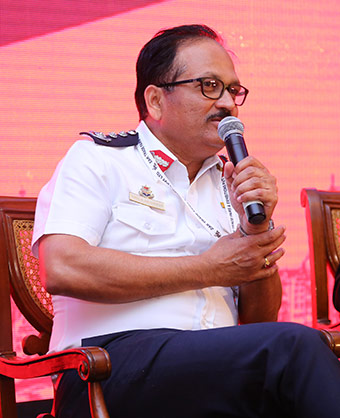
Sunil Nesarikar
A fortnight after he was seriously injured in the fire that destroyed a building at Kalba devi in Mumbai on May 9, Chief Fire Officer of Mumbai, Sunil Nesarikar, passed away on May 24th. We at Window & Façade Magazine (WFM) bid adieu to the Chief Fire Officer, Sunil Nesarikar. Nesarikar and three other fire officers – Sudhir Amin, M N Desai and S W Rane – were caught in the debris when a part of the building that had caught fire. Nesarikar was admitted to the National Burns Centre in Navi Mumbai with over 50 percent burns and was under treatment for a fortnight.
Born in Kolhapur in 1964, Nesarikar completed his schooling at Vasai in Thane district. A science graduate who specialized in Chemistry, he had completed several certification courses along with his fire brigade colleagues, in London, after almost a decade in service. Nesarikar was also nominated for a President’s medal for his bravery during the dousing operation at the Lotus Business Park inferno in 2014. He was presented with a ‘Rajat Padak’ by the Mumbai municipal commissioner for the rescue efforts that he undertook during the Dockyard building collapse (2013) and the house collapse incident at Senapati Bapat Marg (2002). He was a man of integrity, courage and conviction.
We at WFM are deeply saddened by the demise of Sunil Nesrikar and his colleagues – Sanjay Rane (SDO), Mahendra Desai (STO). Sudhir Amin (DCFO) of the Mumbai Fire Brigade. Deputy Chief Fire Officer S.W. Amin, a President`s gold medal awardee, had succumbed to over 80 percent burns he suffered in the same incident. The bodies of two other firemen – M.M. Desai and S.W. Rane – who went missing during the fire-fighting, were found from the debris of the building which had collapsed. We salute these Fire Officers who have sacrificed their lives in the line of duty. Our Condolences and prayers are with the deceased and their families. May their souls rest in peace.
